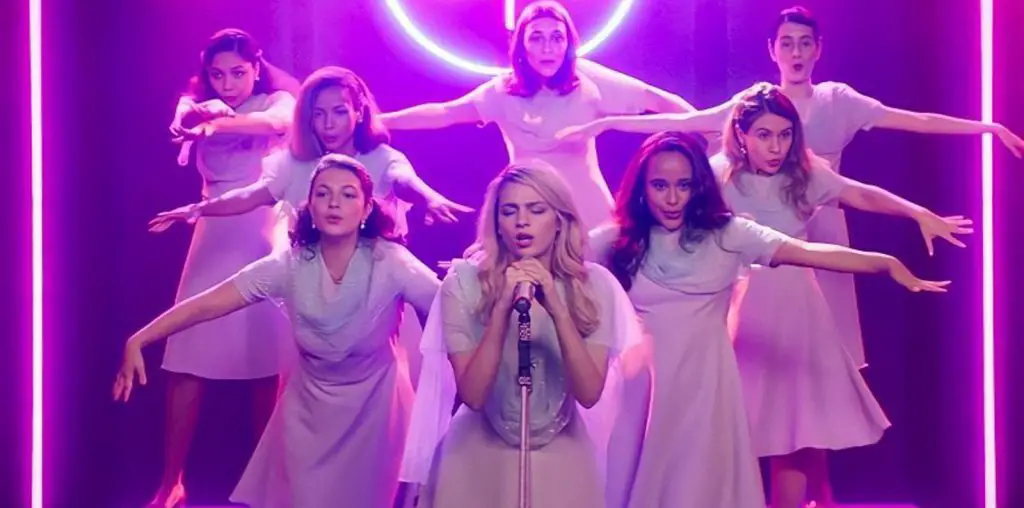
How do you affect change in a social way? Do you join into the current system, and actively try to re-form things in the way you’d like, under the belief that only from within can change really occur? Or do you strike at things from the outside, under the idea that the master’s tools will never dismantle the master’s house, that real change can only be accomplished by anarchic (to the standards of the day) actions and sentiments? These questions are at the heart of Jamie Babbit’s “Itty Bitty Titty Committee,” as the audience is left to ponder whether graffitti, artistic public statements and protesting actually achieve anything.
Anna (Melonie Diaz) is a rather homely, low self-esteemic human floormat. She works at a plastic surgeon’s office, and generally mopes through her day. One night when leaving work, she catches Sadie (Nicole Vicius) spray-painting all over the front of the plastic surgeon’s building. Instead of calling the cops, she and Sadie find common ground and Sadie recruits Anna into her group of radical feminists known as Clits in Action, or C(I)A. As her adventures in activism with the C(I)A move along, Anna finally begins to establish her own real identity, and becomes less of the floormat and more the stomping, steel-tipped boot.
Part social commentary, part drama and part romantic comedy, “Itty Bitty Titty Committee” truly shines when you’re able to sit back and ponder the questions of change presented therein. Obviously the C(I)A feel the only way to accomplish their goals of empowerment and education are through public, artistic (legal or otherwise) sentiments, but as the film moves on we get to see, as the C(I)A does, if there is any real effect felt by their actions, if they achieve anything. Then again, does it matter what they accomplished, or simply that they tried. Depending on who coached whatever high school sport you may’ve played, your answer will vary.
What I really found appealing, and truly appreciated, was that this was a movie that would’ve been very easy to dance into stereotypes and preachiness, but stays away. It just tells a story, pondering change, without being all “look at us, we’re edgy, this is different.” For example, the majority of the characters in this film are lesbians. Does it matter? No. For once a film exists where two girls making-out doesn’t get portrayed or plattered up as anything other than what it is: normal for a good chunk of the population of the world. People fall in love, life is questioned… sexual orientation doesn’t matter. You could make this film with all hetero characters, have them rebel on the same inequalities and ridiculousness, and it’d be pretty much the same film. And it’s refreshing, because I like that I can watch a film about lesbian characters and it’s no more amazing than if the film was filled with people all over 6 foot tall. Would it be noted, yeah? Would it matter? No, because people are people, we’re just all packaged and flavored differently.
Sure, there are moments of feminist-filmic stereotypes, like the idea of a happy-time road trip, aggro-fem punk as a full angst release and home movie-looking footage that could be argued as being similar to a million other “women getting empowered, look at them laugh and be happy in their anarchy” scenarios, but you can forgive it here because it fits. It’s a natural extension of Anna’s journey. Hell, I went through my punk phase (er, um, mental note: not much of a “phase” if you work for a company called Film Threat, listen to Bad Brains all the time and seriously consider hiring a fat man to eat Eddie Murphy on Pay-per-View), so I can relate, and I think most can too. What’s the saying, “if you’re not a rebel in your 20’s, you’ve got no heart. If you’re not establishment by your 30’s, you’ve got no brain.” We’ve all been there, going there or left there.
In the end, the universality of the message and the journey is what truly elevates the film, and kudos to Jamie Babbit for delivering on her continued growing potential as a filmmaker-storyteller. Go see the “Itty Bitty Titty Committee,” and then change the world, dammit!


